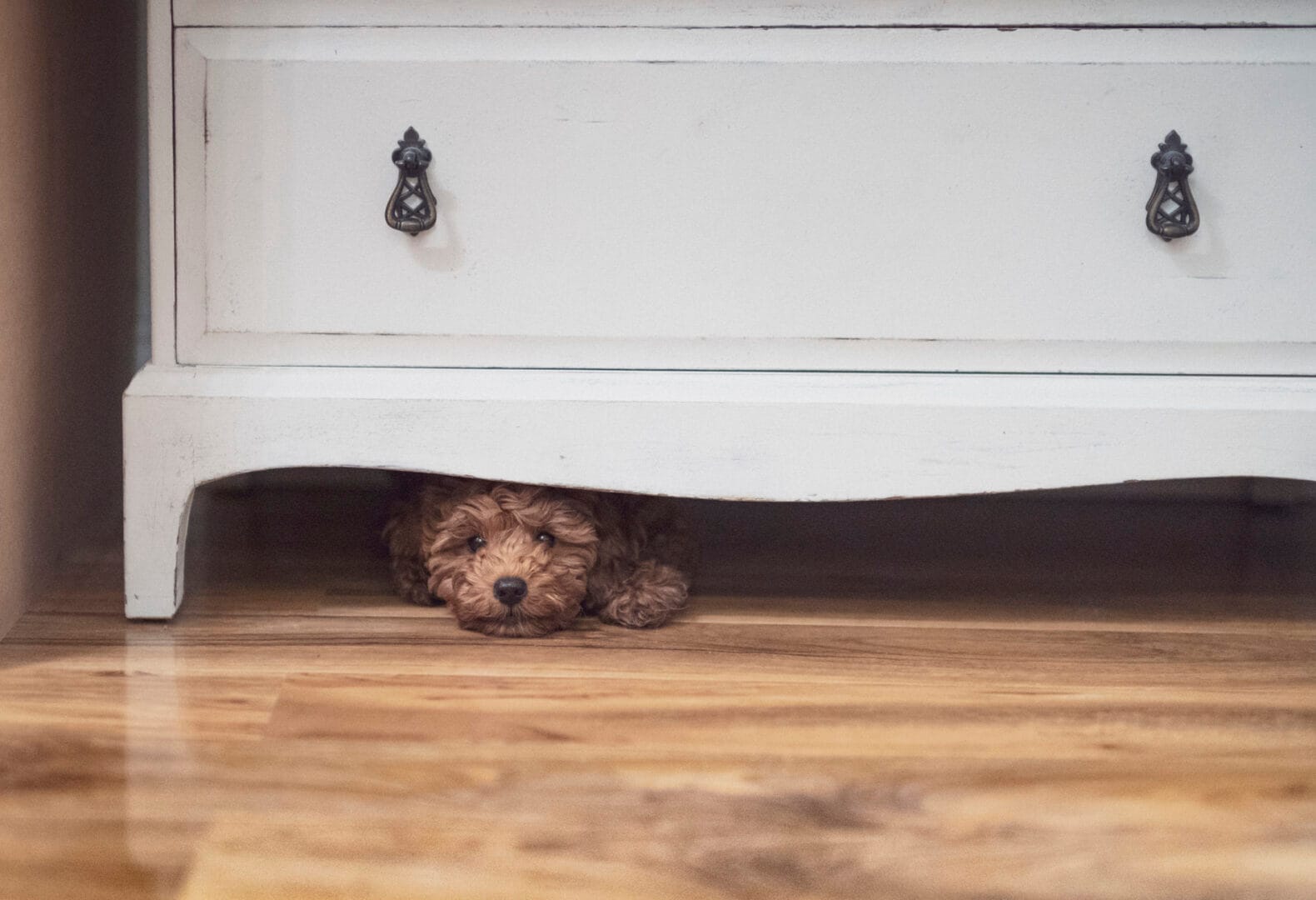Imagine that your sweet dog is relaxing at your feet as you settle in to watch your favorite TV show. Just as the show starts getting good, a clap of thunder sounds. All of a sudden, your terrified dog starts to bark and run for cover.
Has this ever happened to you? If so, you’ve probably wondered how you should handle the situation. Here’s an overview on how to help your scared dog overcome their fears.
What are some of the most common dog fears?
Many sounds, places and things may trigger worry and anxiety in your pet. Some of these fears are rational. For instance, it would be natural and appropriate for your dog to be fearful in a situation in which they are approached by a stranger in a threatening manner.
However, dogs are also often afraid of things that are in no way dangerous to them. In fact, some of the most common dog fears include loud noises, loud people, other dogs and changes in weather such as a thunderstorm, says Dr. Denise Petryk, a technical services veterinarian in Canada. If your dog comes into contact with any of their triggers, they may have a mild fear response, which could include trembling, hiding or putting his tail between their legs. On the other hand, they could also have a severe panic reaction in which they lose control and could potentially harm themselves or others.
Why you may have a scared dog
The reasons that dogs develop fears are as varied as the fears themselves. According to Petryk, it’s difficult — and sometimes impossible — to determine the source of these negative reactions to certain triggers. “Some fears are learned as an attention-seeking disorder, and some fears come from association with a bad experience,” she says.
Your dog might even develop a fear later on in life. According to Petryk, “some dogs become more sensitive with age, or they react to our behavior.” For example, she says that though your dog might not have had any issues with thunder in the past, one bad storm could have the potential to send them cowering.
How to help your scared dog
“Unfortunately, there are no easy answers when it comes to helping fearful dogs,” says Petryk. As such, it might take some trial and error to determine what works best for your pet. Here are four things you should try:
1. Make sure you’re not encouraging the fear
If you see your scared dog in distress, your natural reaction may be to comfort them. For instance, you might want to pet them or put them on your lap. Unfortunately, in your dog’s eyes, this type of reaction may seem like a reward. As such, your pet may feel encouraged to continue displaying this type of fearful behavior. Instead of comforting your dog, you should try to remain as calm as possible. Though you shouldn’t reward your dog for engaging in this type of behavior, you shouldn’t punish them either.
2. Swaddle your pet
“Products like the ThunderShirt can work well,” says Petryk. With these types of products, you can swaddle your furry friend in much the same way as you would swaddle a newborn baby. This process provides your dog with constant, gentle pressure that they may find comforting.
3. Expose your pet to the fear in a controlled setting
If your pet is scared of a certain noise, you might be able to help them overcome the fear by desensitizing them to it. This process involves exposing your dog to the noise in a controlled setting. “But it is safest to work with a professional dog trainer or behavior specialist,” warns Petryk. If you do not seek out professional guidance, you run the risk of making the problem even worse.
4. Take your pet to the vet
According to Petryk, you should “discuss any fear or phobias your dog seems to have with a veterinarian who knows you and your dog.” Your vet can rule out a medical problem that could be contributing to the fearful reaction and prescribe a treatment plan. “Your veterinarian might recommend a ThunderShirt, a trainer and some medication,” says Petryk. If you have a pet sitter or board your pet, be sure to communicate their specific needs in the case that they become fearful.
Originally written by Laura Agadoni.


